On the evening of July 3, Beijing time, the 2022 F1 Grand Prix in the UK kicked off. As soon as the race schedule entered the first corner, the Chinese driver Zhou Guanyu’s car was violently hit by Russell from the side and rear, causing the car to fly up, and then buckled and slid all the way to the side fence… The car was partially damaged. The air intakes have even been ground down.
Fortunately, in the early morning of the 4th, he reported safety through his personal Weibo: “I’m fine, I’m lucky to be able to stand here, Halo saved me today. Thank you for your concern for me.”

Figure | Zhou Guanyu Weibo
This isn’t the first time Halo has saved a driver’s life.

Grosjean, who suffered minor burns on his limbs, used video to keep fans around the world safe on social media and thanked the Halo system for saving his life | https://twitter.com
French driver Romain Grosjean, who belongs to the Haas team, suffered a serious crash at the start of the 2020 Bahrain race: his car was almost completely destroyed, but he was lucky to have only minor injuries. Grosjean, who survived the death, immediately posted a social media message from his hospital bed: “I didn’t like Halo a few years ago, but I think it’s the greatest technology introduced in F1, without it, I will be today. Unable to talk to you. ”
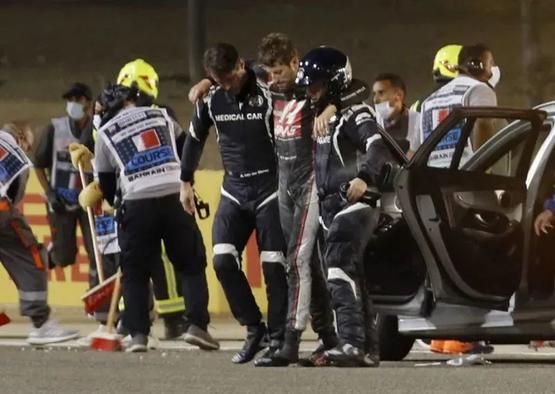
Grosjean rescued from accident scene by crew | www.formula1.com
The technology, known as the “halo,” refers to the slingshot-like structure used to protect the titanium material on both sides of the F1 driver’s head. The reason why it is called “halo” is because in shape, this safety structure surrounds the driver’s head, forming “a ring of iron and steel”; at the same time, it is also because it can bring a “bright ray of life” to the driver when it is really needed. ”: According to estimates, this technology can theoretically increase the survival rate of drivers by 17% in an accident.
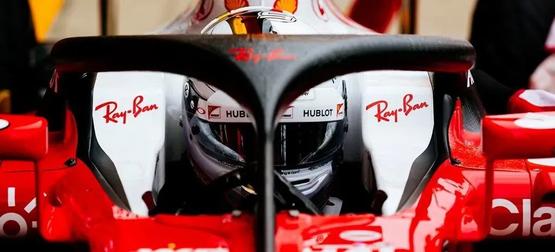
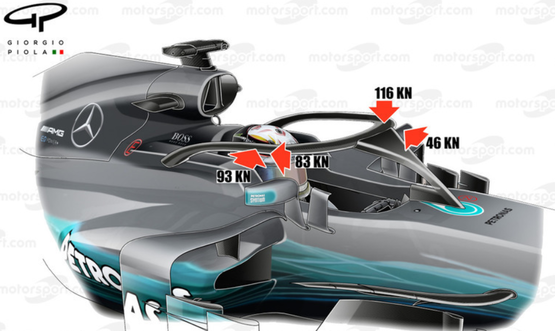
“Halo” system with Y-shaped basic structure | www.formula1.com
However, because its Y-shaped structure resembles the flip-flops on flip-flops, the “halo” has been jokingly called “flip-flops” by domestic F1 fans .
Decline in appearance and life-saving, which one do you choose?
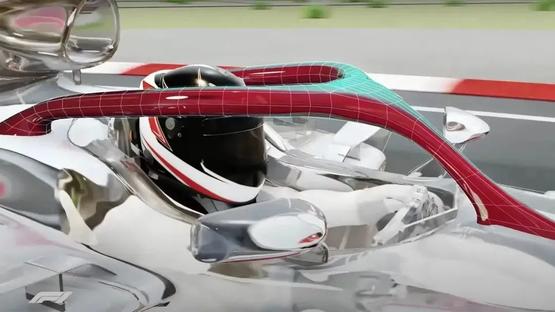
The “Flip-Flops” consists of three main elements, the “V-transition” at the front of the center, the section surrounding the cockpit, and the rear mounting bracket | www.formula1.com
In F1 racing, there are generally three basic types of collisions: car-to-car collision, car-to-obstruction collision, and car-to-debris collision. The International Motor Sports Federation (FIA) has conducted extensive analysis of these three different types of accidents, and no matter which one, “Halo” can have a significant effect. From being proposed in 2015 to its debut in 2016, the technology has undergone a series of evaluations, and the FIA has finally announced that the 2018 “Halo” is a task that each team has to accept.
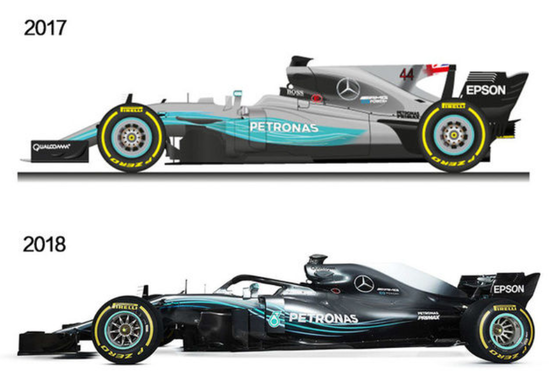
After the installation of “flip-flops”, the aerodynamic shape of the F1 car has been significantly changed | www.formula1.com
Today, when the concept of “unmanned driving” is very popular, we often hear terms such as “active braking” and “departure warning”. Safety”, the key is the word “avoidance”. For the inevitable accident, what we need is to minimize the consequences of the accident. This kind of technology that reduces the big to the small is called “passive safety” in the car.
The core meaning of passive safety is to ensure that the vehicle body structure can give the driver enough space to survive after an accident. However, ordinary cars are used as tools, and the passenger compartment where the passengers are located has a typical “cabin” structure, and the “cage” structure used to protect the passengers in the cabin is obvious. As a professional racing car, F1 has a very strong purpose, and the structure of the “cabin” has been greatly simplified. At this time, the “frame” used to protect the driver has become “Halo”.
Many people will think, ” It looks like this is a frame, how much can it play a role “?
Not only ordinary people think this way, but many drivers also think so – affecting the appearance is a trivial matter, it also interferes with the driver’s vision, and more importantly, in the super-high-speed F1 arena, any component that affects the wind resistance is a decision The key to victory or defeat.
From an aerodynamic point of view, the Halo has obvious negative effects. In fact, when Halo was introduced, it caused quite a lot of trouble to various F1 teams. To install this structure on a car that has been finalized, it is necessary to re-direct the airflow, and the cost is huge. To minimize the impact of the Halo, the average team has done a lot of optimization for the aerodynamic losses flowing into the engine air intake, the turbulence of the rear wing, and even redesigned the casing. The single price of the “Halo” is 28,000 US dollars , but in order to add it to the car, the modification and addition of the car shell chassis may cost as much as 1 million US dollars (single car), which is also mandatory for F1 teams. One of the reasons for the grumbling of retrofit regulations.
“Give me a chainsaw and I’ll cut the Halo off right away!” – that was the opinion of most drivers at the start of the 2018 season.

Halo can hold up to 12 tons, which is roughly the weight of a double-decker bus | www.wired.com
However, the protective effect brought by Halo is also immediate. Test data shows that the Halo system can withstand dozens of times the full mass static load of the vehicle itself in the case of a car-to-car collision. Withstands up to 12 tons, which is roughly equivalent to a double-decker bus .
After all, in the 300+km/h arena, a collision at any time cannot be minor, and the huge kinetic energy it brings will cause devastating damage to the car and the driver. Therefore, Halo’s 12-ton load-bearing capacity is enough to ensure that it can cope with severe collisions in a considerable number of F1 races.
Of course, for an F1 car, in order to run well, it is necessary to reduce the weight of the car and improve the aerodynamic shape as much as possible. No one wants to add any unnecessary weight of 1 gram. Look, it’s probably about ten kilograms.
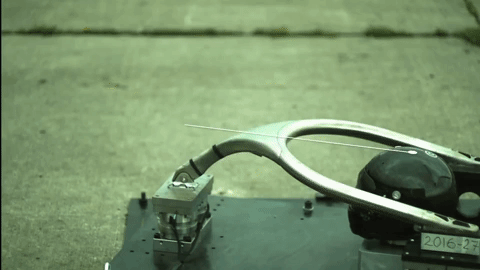
Schematic diagram of laboratory simulation, how “flip-flops” effectively protected Grosjean’s head in this accident | www.tekdeeps.com
In exchange for the lightest weight and maximum safety, titanium alloy has become the first choice, and the Titanium Grade 5 6AL4V selected by Halo has a tensile limit of about 3-4 times that of commonly used aluminum alloys, 2017 The annual quality of Halo can be controlled at about 9 kilograms .
However, this weight is nothing compared to saving a life. In the 2018 Belgian Grand Prix, Halo saved the life of driver Leclerc. At that time, Renault driver Hulkenberg missed the braking point at turn 1 and the front wheel severely locked, and then hit Alonso driving McLaren. Alonso’s car flew directly to the Sauber C37 driven by Leclerc. top. Fortunately, due to the existence of the Halo device, several drivers were not injured. Coupled with Zhou Guanyu , who survived this time, I believe that there will be no more complaints about “flip-flops” among F1 drivers.
Author: sleepylin
Editor: Zhu Buchong
an AI
Don’t die for dressing up, it’s wrong at any time

This article is from Nutshell and may not be reproduced without authorization.
If necessary, please contact [email protected]

This article is reproduced from: http://www.guokr.com/article/461749/
This site is for inclusion only, and the copyright belongs to the original author.